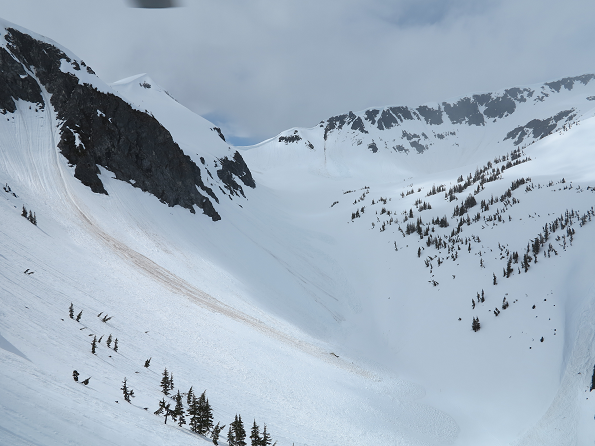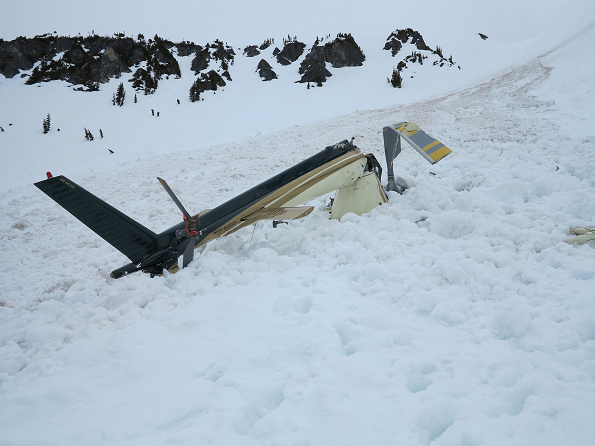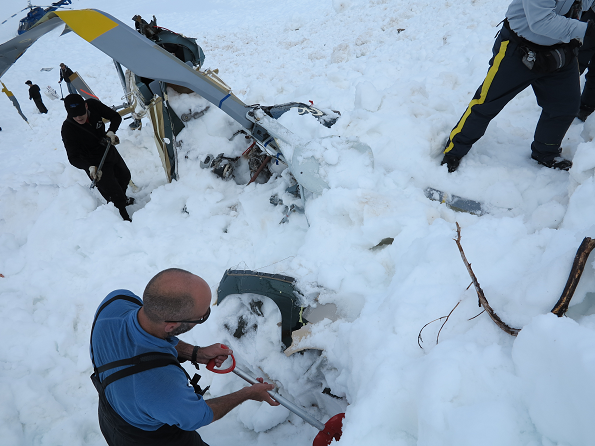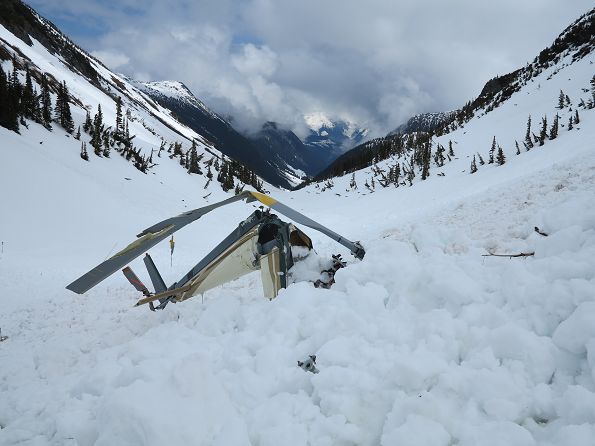Loss of visual reference and collision with terrain
Bailey Helicopters Limited
Eurocopter AS350-B2 (Helicopter), C-FBHN
Terrace, British Columbia 14 nm W
The occurrence
The Bailey Helicopters Limited Eurocopter AS350-B2 helicopter (registration C-FBHN, serial number 3763) departed Terrace Airport at 0754 Pacific Daylight Time for a local mountain training flight, with 2 pilots and 1 aircraft maintenance engineer on board. At 0841, the helicopter struck the snow-covered side of a mountain ravine in daylight conditions at about 4000 feet above sea level. The 406-megahertz emergency locator transmitter activated on impact, resulting in the initiation of search activities. A local commercial helicopter operator located the accident site about 1 hour 50 minutes later. There was no fire. The aircraft was destroyed, and there were no survivors.
Investigation information
Download high-resolution photos from the TSB Flickr page.
Class of investigation
This is a class 3 investigation. These investigations analyze a small number of safety issues, and may result in recommendations. Class 3 investigations are generally completed within 450 days. For more information, see the Policy on Occurrence Classification.
TSB investigation process
There are 3 phases to a TSB investigation
- Field phase: a team of investigators examines the occurrence site and wreckage, interviews witnesses and collects pertinent information.
- Examination and analysis phase: the TSB reviews pertinent records, tests components of the wreckage in the lab, determines the sequence of events and identifies safety deficiencies. When safety deficiencies are suspected or confirmed, the TSB advises the appropriate authority without waiting until publication of the final report.
- Report phase: a confidential draft report is approved by the Board and sent to persons and corporations who are directly concerned by the report. They then have the opportunity to dispute or correct information they believe to be incorrect. The Board considers all representations before approving the final report, which is subsequently released to the public.
For more information, see our Investigation process page.
The TSB is an independent agency that investigates air, marine, pipeline, and rail transportation occurrences. Its sole aim is the advancement of transportation safety. It is not the function of the Board to assign fault or determine civil or criminal liability.



